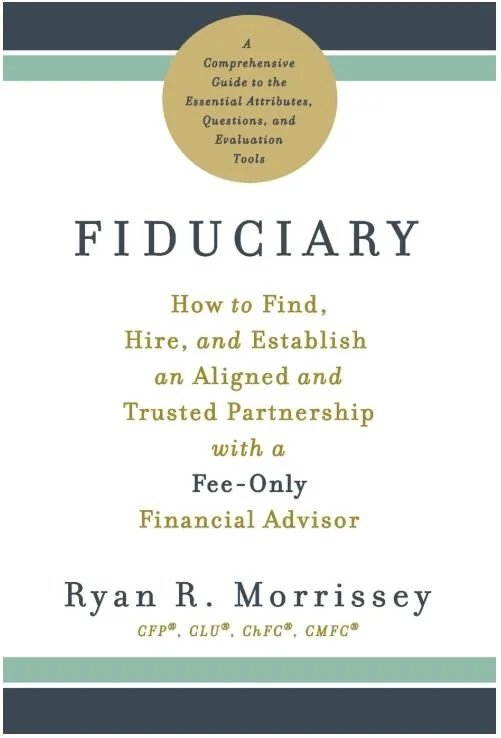Dissecting the Keys to Successful Investing with Larry Swedroe
In today’s blog, I’m incredibly honored to be joined by investing legend Larry Swedroe.
Larry is the author and co-author of 21 books on investing (yes, 21!), and he recently retired after an impressive 28-year career as the principal and director of Research at Buckingham Strategic Wealth.
ACTIVE MANAGEMENT
Active investing, often seen as a way to outperform the market, can come with several hidden drawbacks that many investors overlook.
While it promises higher returns by selecting individual stocks and timing market movements, the reality is that the costs and risks associated with this approach often outweigh the potential benefits.
COSTS ASSOCIATED WITH ACTIVE MANAGEMENT
While active managers tend to select stocks that outperform the market by a small margin, around 70 basis points, the real issue lies in the high costs associated with active management.
Some of these costs include:
Expense ratios
Trading costs
Bid-offer spread costs
Market impact costs.
Additionally, active managers often hold 5-10% of the portfolio in cash, which can hinder performance, especially when the market is performing well.
For example, if the market is up 28% in a year, but cash is earning only 4.5%, that’s a substantial missed opportunity.
THE SHRINKING POOL OF ACTIVE MANAGERS
In the 1990s, roughly 20% of active managers were generating statistically significant alpha. However, the market has grown increasingly efficient since then, and by 2010, that number had dwindled to just 2%.
Swedroe attributes this drop to several factors, including the growing sophistication of institutional investors and the decreasing role of individual investors in the market.
Back in 1945, nearly 90% of stocks were held by individual investors, which meant that when legendary investors like Warren Buffett made trades, they were often trading against less-informed investors.
Today, however, only about 10% of trading is done by individuals, with the rest dominated by highly sophisticated institutional investors with access to the best technology, data, and analysis.
THE CASE OF WARREN BUFFETT
Warren Buffett has long been admired for his ability to generate alpha through stock picking. However, in recent years, Buffett's performance has not been able to beat the market as it once did.
As more investors have adopted his strategy, the market has become more competitive, making it increasingly difficult for even the most seasoned investors to outperform the broader market.
RISK OF “WINNING BIG”
In his book Enrich Your Future: Keys to Successful Investing, Larry draws a powerful analogy between tennis and investing.
He shares how his coach once told him that a great shot he had made was his "worst enemy" because while it was a winning play, it was difficult to replicate.
Larry recognized that many investors fall into the trap of trying to pick that one "winning shot"—the next big stock or market trend—believing that a single success will make their fortune.
However, the key to successful investing isn’t about hitting a big win; it’s about consistency and minimizing mistakes over time.
WHY MOST ACTIVE MANAGERS FAIL
When you look at the long-term returns of the stock market, it can be shocking.
On average, stocks have earned an annualized return of about 10% over time. Treasury bills, on the other hand, have earned around 3%, a solid "risk-free" return. But here's where things get interesting: Out of all the stocks ever listed, only about 4% of them account for 100% of the risk premium of the stock market—meaning they’ve contributed to the vast majority of the returns.
So, you might ask yourself: what are the odds that you, with limited resources, working part-time, no access to databases like professional investors, and no PhD in finance, are going to identify these few exceptional stocks that lead to market-beating returns? If you don’t have the same tools and resources as these professional firms, it’s extremely unlikely.
The Behavioral Biases That Lead Investors Astray
One of the biggest challenges for individual investors is dealing with their own biases.
Behavioral psychologists have long pointed out that we have a tendency to remember our winners and forget our losers. This cognitive bias distorts our perception of how successful we are.
Studies show that many investors overestimate their ability to beat the market. In one study, about 70-80% of investors claimed they had outperformed the market, even though most of them hadn’t.
A significant portion of those who believed they had beaten the market were actually losing money during a period when the broader market had strong returns.
THE POWER OF INDEXING AND PASSIVE MANAGEMENT
If you're serious about investing, it's time to put away the idea of "beating the market" and embrace a smarter, more realistic approach: indexing and low-cost passive investing.
Larry hasn’t bought an individual stock in over 30 years. Despite being trained as a security analyst and portfolio manager, the evidence convinced him that even with his background, the odds of beating the market were incredibly low—especially after accounting for the costs of trying.
For most investors, the simplest, most effective strategy is to invest in low-cost index funds.
These funds track the market and provide broad diversification without the high fees and risks of trying to pick individual stocks.
DIVIDEND INVESTING
Dividends have long been a hallmark of conservative investing strategies, especially for retirees. Many people believe that investing in stocks that pay high dividends is the best way to generate income during retirement.
However, Professor Eugene Fama from the University of Chicago wrote a groundbreaking paper stating that dividend policy doesn’t impact the total returns of a stock in any meaningful way.
Here’s an example: If you invested in stocks with a price-to-earnings ratio (P/E) below 15, you'd see similar returns, whether they had a 5% dividend yield or a 1% dividend yield.
Why is that? Dividends are, in essence, a return of capital. If you own stock, and the company distributes dividends, the stock price will drop to reflect that cash payout. You’re essentially getting the same value back, minus taxes on those dividends.
Let’s say you own a stock worth $100 per share, and it pays a $1 dividend. The share price will likely drop by $1 after the dividend is paid (from $100 to $99). The catch here is that you pay taxes on that $1, whereas if the company used the money to buy back shares, it would drive the stock price up by the same amount, and you could sell those shares if you needed income — paying fewer taxes in the process.
So, unless you need immediate income, reinvesting in stocks that offer strong returns without necessarily paying a high dividend might be a more efficient strategy.
CLOSING THOUGHTS
The key is not to get distracted by the noise — whether it’s the allure of high dividend yields or the temptation to beat the market. Instead, focus on the evidence-backed strategies that work for the majority of investors.
If you're nearing retirement, the best advice I can give is this: Be patient, be strategic, and ensure your portfolio is designed to provide long-term growth with sustainable income, without compromising your risk tolerance or financial goals.
If you have a question or topic that you’d like to have considered for a future episode/blog post, you can request it by going to www.retirewithryan.com and clicking on ask a question.
As always, have a great day, a better week, and I look forward to talking with you on the next blog post, podcast, YouTube video, or wherever we have the pleasure of connecting!
Written by Ryan Morrissey
Founder & CEO of Morrissey Wealth Management
Host of the Retire with Ryan Podcast





